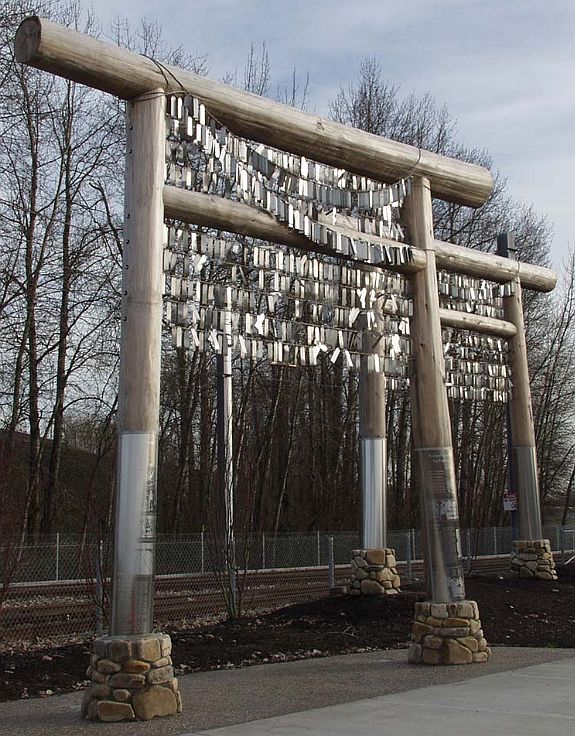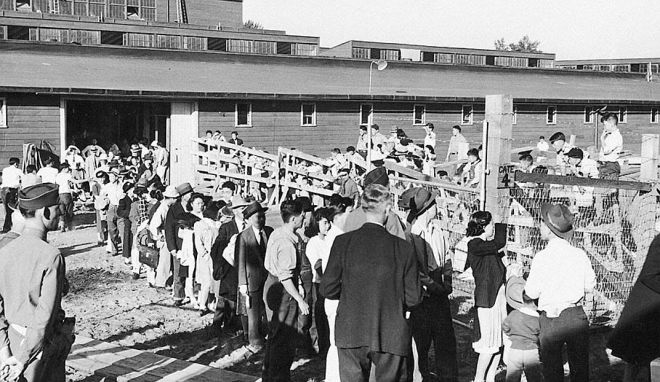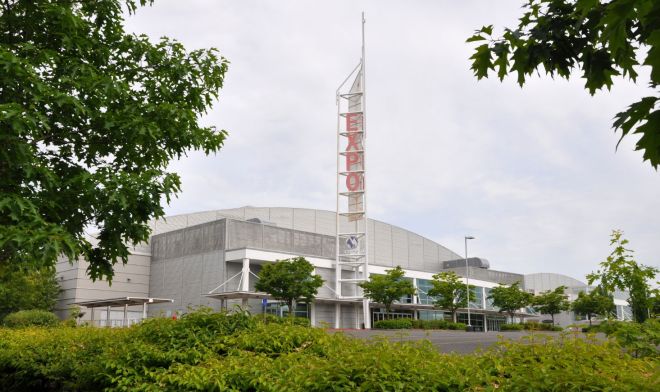Public Art on MAX Yellow Line draws from the history and culture of the area at every stop along the MAX Yellow Line.
Japanese relocation during World War II is marked by traditional Japanese timber gates strung with metal “internee ID tags”.
In May 1942, Portland area Japanese Americans, both issei, or first generation, and nisei, or second generation, were evacuated to hastily-constructed temporary living spaces. The Portland Assembly Center had previously been used as stockyards, and the dirt ground that normally housed livestock was covered with a plank floor. Each family was assigned a room with a common toilet and little privacy.
Most internees from Portland were sent to the Minidoka Relocation Center in Idaho. Some internees went to Tule Lake in California, and a portion relocated to the internment camp in Heart Mountain, Wyoming.
The Ku Klux Klan, the American Legion, and other “patriotic” groups wanted to deport all Japanese. One major obstacle stood in the way. Seventy percent of the 120,000 persons who would be affected by an evacuation program were American citizens and, technically, protected by the Bill of Rights.





